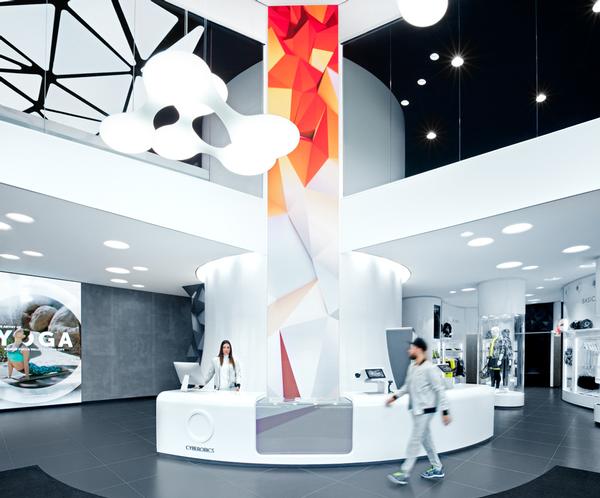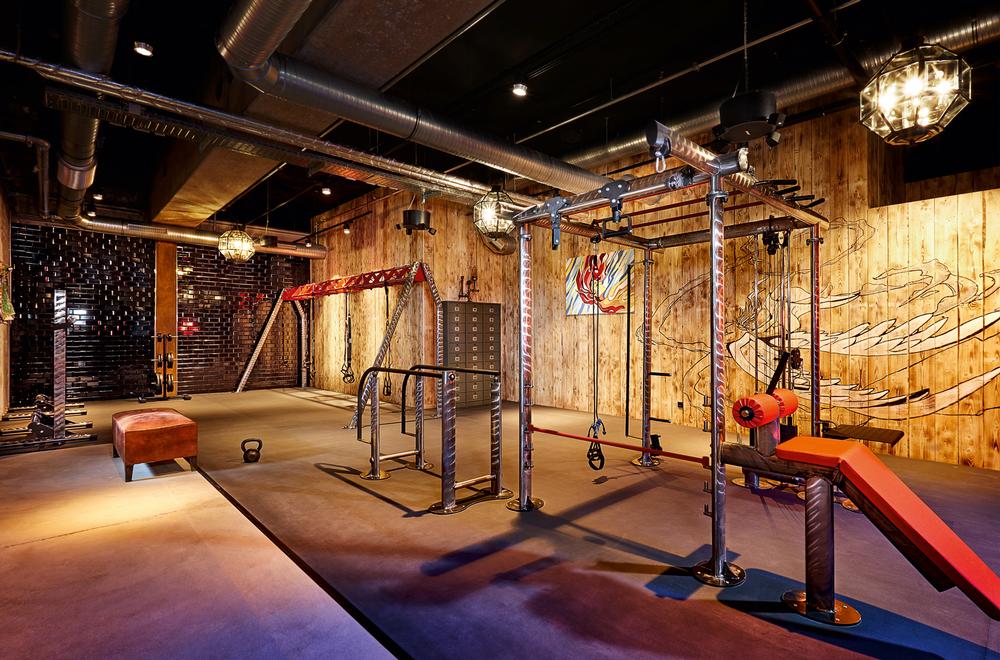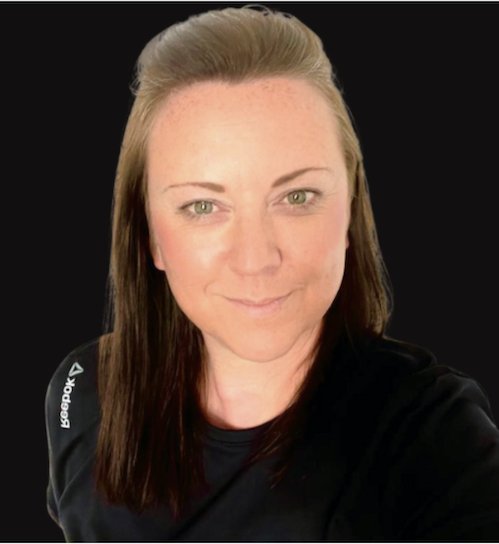Our vision as a Group is to have all the solutions you need for your fitness lifestyle,” says Pierre Geisensetter, spokesperson for the McFIT Global Group. “We’re pretty much there.”
That’s a bold statement, but when you look at the breadth of the offering within the McFIT Global Group – the newly formed umbrella company – you have to acknowledge that the team does seem to have most of the bases covered. Its health club chains span both low-cost and premium offerings, there’s a nutrition brand, and customised at-home fitness is provided via its own apps (see The McFIT Family, p45). It even has its own sports model agency.
The Home of Fitness
So what’s the story behind this fitness mega-brand – how has it reached the position it occupies today?
“McFIT was founded in 1997 by Rainer Schaller, who had an ambition to make fitness training affordable for all,” explains Geisensetter. “The first McFIT club opened in Bavaria, Germany, with the strapline ‘The fitness hall for all’. In the 20 years since then, the chain has grown to 243 clubs in Europe.
“But while the overall philosophy has stayed very much the same – making fitness affordable – the offering has evolved. In 2012, McFIT introduced a new concept: ‘Home of Fitness’. The pricing was still discount, but the offering now looked and felt premium. We added modular training systems in our gyms, and for the first time had group exercise in the shape of cyber training.
“By the end of this year, all our clubs will be at the ‘Home of Fitness’ standard, and that makes them very special.
“And we believe there’s plenty of opportunity for further growth, even in Germany where we have the majority of our clubs: only 12 per cent of the population is exercising at the moment, but the market grew by 4.2 per cent last year. We can do a lot more here.”
But that view is, he agrees, based on the strong position McFIT already has in the market. “If I were looking at the low-cost market now as a potential new entrant, I wouldn’t go there – not with McFIT in the mix. So I’m happy we’re the big player. It means we can concentrate on our own business. It’s good to have competition, but we don’t spend too much time looking at what they’re doing. We channel our energies into taking our own brands where we want them to go.”
He continues: “Looking beyond Germany, we also see a lot of potential across Europe. The market is changing, with growing interest in fitness-orientated lifestyles. We’ve just opened more clubs in Poland and Italy and have three more coming up in Spain.”
And then there’s the matter of the new parent company, which tellingly has been named the McFIT Global Group. Are there corresponding plans to push beyond Europe and into other parts of the world, I ask? Geisensetter smiles, in a way that suggests there are details he’s not willing to share at this stage. “We’re thinking about that for sure. If you’re the biggest player in Europe, it’s only natural to think about how you might take your operation overseas. But right now, we’re just taking a look at the market.”
Portfolio growth
That topic gently sidelined, we move on to discussing the second brand out of the McFIT stable: the small footprint, functional fitness studio brand HIGH5, which launched in Berlin in April 2015.
“The idea behind HIGH5 was to make fitness training even more affordable,” says Geisensetter. “McFIT was already low-cost, but HIGH5 is half the price of McFIT – just €9.90 a month.
“But again, the studios don’t look discount. They look like sports and athletic training facilities in US colleges – and they attract a clientele to match. People don’t really come for the price. They come because they’re really into their sports. As a result, we haven’t really experienced cannibalisation from our other brands.”
Then, in April 2016 – just one year after the first HIGH5 opened – the McFIT Group unveiled its next big launch: virtual class content under the brand name Cyberobics.
Managing director Oliver Schulokat takes up the story: “When we launched the ‘Home of Fitness’ concept for McFIT in 2012, we’d already identified the huge potential of virtual training. From the outset, we decided not to work with live trainers, but instead to have group exercise rooms with our own self-produced Cyber Training content.
“Compared with what we have now it was quite basic, with an instructor showing the exercises and giving advice against a white background. But in spite of that, it was very successful: we got many more people into our classes, and particularly women.
“In 2014, we therefore decided to develop a new virtual product. We wanted to make Cyber Training more of an experience for the user, so we brought in expertise from the attractions sector. That resulted in us going to New York to film two workouts with celebrity personal trainer David Kirsch, on a rooftop with a view down to Manhattan.
“Our group exercise rooms were packed as soon as those classes went live. We felt we’d found a new formula for virtual training: workouts with the best trainers in the US, taking place in the most breathtaking locations in the world. That was the beginning of Cyberobics.”
In addition to using Cyberobics as a USP in its own portfolio of health clubs, Cyberobics licences are also available to non-competitors, and to all operators in countries where McFIT has no presence. “We’re talking to operators around the world, and especially in the UK,” confirms Schulokat.
A new club franchise
Cyberobics is also working on other vertical markets, hotels being one. “There are two possible models, either a small Cyberobics room – all you’d need is 40sq m – or an in-room Cyberobics TV channel,” says Schulokat.
“We’re in talks with a big German hotel chain that wants to integrate Cyberobics into its in-room entertainment, with 10 short workouts you can do in a small space and with no equipment. Then, if you want to do a longer workout, you can go to the dedicated Cyberobics room. We see it as a huge opportunity because hotel fitness can often be quite boring.”
Corporate wellness is another avenue being pursued: “We launched a new corporate fitness programme on 1 February this year. It has three prongs: special rates for membership at our clubs; at-home training offered through our Cyberobics On Demand app, which will launch by June at the latest; and Cyberobics units in offices.
“It’s only been available for a couple of weeks and the response has been overwhelming: we’re getting requests more or less every hour. The German corporate market has really just been waiting for this to happen – for McFIT to launch something like this.”
The very latest news from Cyberobics is that the company will also be launching its own Cyberobics clubs. The first – a women-only club – will open in Berlin in May or June of this year. Offering three Cyberobics rooms, cardio and circuit training, functional training and personal training – as well as wellness, spa, bistro and kids’ lounge – this inaugural club will measure 1,400sq m.
“We’re planning to open a few of these Cyberobics-branded clubs as corporately-owned sites,” says Schulokat. “But this concept will also be franchised as a boutique club model without wellness, spa, bistro or kids’ lounge. Requiring only around 350sq m, we believe it has potential both in Germany and internationally.”
Curating memories
As if all that weren’t enough, the newest health club brand in the Group’s portfolio – John Reed Music Fitness Clubs – opened the doors of its first club in mid-2016, in the German city of Bonn.
These clubs are design-led, dominated by flavours and cultures from around the world: Buddha statues are commonplace, and one club even has a traditional wooden Indonesian house built inside the gym, with a CV area on the balcony.
“Our founder and CEO Rainer Schaller loves to travel,” explains John Reed’s head of marketing and music Marcus Adam. “On all his journeys he’s collected impressions, memories, inspiration – and at the beginning of 2016, he came up with a new concept that brings all these memories together and puts them into a club.
“He sent our design teams out to search for things to put in the clubs, and we have a lot of souvenirs from places like India and China – but every single club is different.”
Widely referred to as a club for Millennials, Adam disagrees with this label: “I don’t think it’s a question of age. It’s more a question of how you feel and what you expect from life.
“We have a word in German: ‘Lebensgefühl’. I don’t know how exactly to translate it – it’s sometimes translated as ‘lifestyle’, or an ‘awareness of life’, but that isn’t quite right because it’s also about the special feeling you get when you’re doing something you love.
“John Reed is all about creating that feeling, creating an atmosphere where you love to go because it’s visually spectacular, the music is good and you meet great people to train with and hang out with afterwards – sitting in the lounge or maybe playing pool. It’s the only one of our club models that really has social space.”
He continues: “Music is key to the concept, and the music we play is contemporary – we don’t play classical or jazz. We have DJs playing twice a week in all our clubs and we invented our own John Reed Radio, which plays only very dynamic, high-energy music: pop, R&B, rap, hip-hop, electro. If you don’t like music, it isn’t the right club for you. But if you are into music, it’s a great place.”
Bringing ideas to life
Adam concludes: “If you look at the John Reed story, you get an understanding of the dynamism of the McFIT Global Group. We came up with the idea for John Reed in January 2016; the kick-off meeting happened in April or May; and three months later we opened the first club.
“This is the most exciting thing about our business: the energy and the power and the speed to start projects – to have ideas and to make those ideas come alive. We’re very flexible and very dynamic in the way we work.
“What that also means is that it’s hard to say where we’ll be in five years’ time. We might have had three new ideas for other club concepts, or we might have opened 300 John Reed clubs all over the world. It’s hard to say! But that’s an exciting position to be in – it’s what makes the job so interesting.”
























































